The coffee culture in the Philippines may not be as rich or as clear compared to other countries. Reflecting on my childhood, the vivid memories of my parents preparing coffee every morning paint a nostalgic picture of a time when 3-in-1 coffee sachets were yet to dominate. The ritual involved a meticulous process of combining separate elements—creamer, coffee, and sugar—in distinct containers. This daily routine, common in households across the country, symbolized a cherished breakfast tradition. Afternoons were marked by another round of coffee, accompanied by a simple biscuit or bread, forming a routine that transcended geographic boundaries.
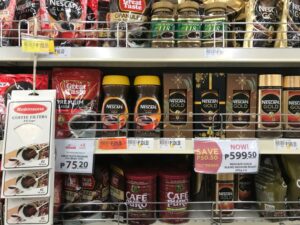
Back then, coffee was confined to homes, absent from dedicated coffee shops. The notion of venturing out solely for coffee was alien, as this cultural practice thrived indoors. The prevalence of formulated instant coffee, rather than authentic brews, was a norm. Foreign attempts to introduce coffee shops faced resistance and closure, with skepticism about paying extra for coffee prevailing in a tropical climate.
However, the dawn of the 21st century witnessed a transformative shift. Returning from abroad in 2000, I noticed the emergence of bottled water and the inception of coffee shops. Starbucks, with its pricey offerings and trendy merchandise, sparked a global coffee craze, transforming the beverage into a ubiquitous daily indulgence. The once unconventional idea of paying a premium for coffee gained widespread acceptance, making coffee shops ubiquitous, even among teenagers.
This coffee revolution brought positive changes, fostering a newfound awareness of coffee varieties, preferences, and brewing methods. Consumers abandoned powdered formulations, becoming discerning enthusiasts. The diversity of coffee options expanded exponentially, challenging individuals to navigate an array of unfamiliar names and flavors.
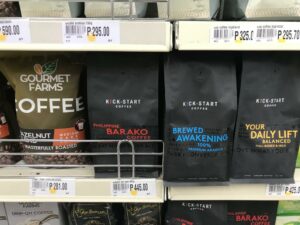
The Filipino Coffee Varieties
While the Philippines may not boast a coffee culture as robust as Vietnam, Colombia, or Italy, its coffee history dates back to the 18th century. The country proudly cultivates four main coffee varieties: Arabica, Barako (Liberica), Excelsa, and Robusta. Notably, Robusta dominates production, constituting 90% of the Philippines’ coffee output.
Arabica
Known for its nuanced flavors and aromatic profile, Arabica thrives in certain Philippine regions, offering a distinctive coffee experience.
Barako (Liberica)
Renowned for its bold and intense taste, Barako has become synonymous with Philippine coffee culture, embodying a unique regional identity.
Excelsa
Celebrated for its complex and fruity notes, Excelsa adds a layer of diversity to the Philippine coffee landscape.
Robusta
The predominant variety, Robusta, is valued for its robust flavor and higher caffeine content, contributing significantly to the country’s coffee production.
As the Philippines navigates this dynamic coffee landscape, the diverse range of coffee options reflects not only changing preferences but also a broader cultural shift towards a more sophisticated and conscious coffee consumption.
The Origins of Various Coffee Varieties in Philippine Regions
Here is a list of where coffee originated from and what kind of coffee are being grown and produced and each region considering the differences in climate.
Cavite: Barako (Liberica)
Origin: Cavite, particularly the town of Amadeo, is renowned for producing Barako coffee. The unique soil and climate conditions contribute to the distinct boldness and intense flavor of Barako.
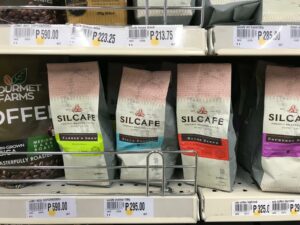
Batangas: Barako (Liberica)
Origin: Batangas is another significant region for Barako coffee production. The province’s elevated areas, including Lipa, are known for cultivating this robust Liberica variety.
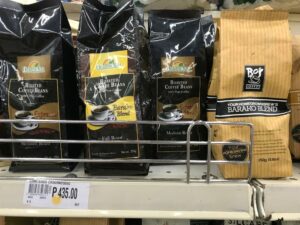
Benguet: Arabica
Origin: Nestled in the highlands of Benguet, Arabica coffee thrives in the cool climate and fertile soil. The elevation and unique conditions contribute to the well-balanced and flavorful Arabica beans.
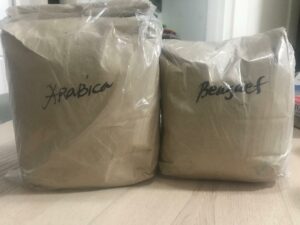
Sagada: Arabica
Origin: Sagada, located in the Mountain Province, is celebrated for its Arabica coffee. The mountainous terrain and temperate climate create an ideal environment for growing high-quality Arabica beans.
Bukidnon: Robusta and Arabica
Origin: Bukidnon, situated in Mindanao, cultivates both Robusta and Arabica varieties. The province’s diverse topography and climate zones support the growth of these distinct coffee types.
Kalinga: Arabica
Origin: Kalinga, in the Cordillera region, is known for its Arabica coffee. The province’s elevation and unique microclimate contribute to the Arabica beans’ distinctive characteristics.
Sulu: Arabica
Origin: Sulu, part of the Autonomous Region in Muslim Mindanao (ARMM), is emerging as a region for Arabica coffee production. The unique cultural and climatic conditions influence the flavor profile of Sulu’s Arabica beans.
Davao: Robusta and Arabica
Origin: Davao, a key coffee-producing region in Mindanao, is known for both Robusta and Arabica varieties. The region’s diverse elevations and fertile soil contribute to the cultivation of high-quality coffee beans.
Ilocos: Arabica
Origin: Ilocos Norte and Ilocos Sur are recognized for cultivating Arabica coffee. The coastal and mountainous terrain provides suitable conditions for Arabica coffee plants to thrive.
Cotabato: Robusta and Arabica
Origin: Cotabato, located in Mindanao, is a hub for both Robusta and Arabica coffee cultivation. The province’s varying elevations and climate zones contribute to the diversity of coffee produced.
Iloilo: Robusta
Origin: Iloilo, primarily known for Robusta coffee, benefits from favorable conditions for robust coffee bean growth. The province’s agricultural landscape supports the production of quality Robusta coffee.
Sultan Kudarat: Robusta
Origin: Sultan Kudarat, situated in Mindanao, is recognized for its Robusta coffee production. The province’s climate and soil conditions contribute to the robust flavor of the coffee beans.
